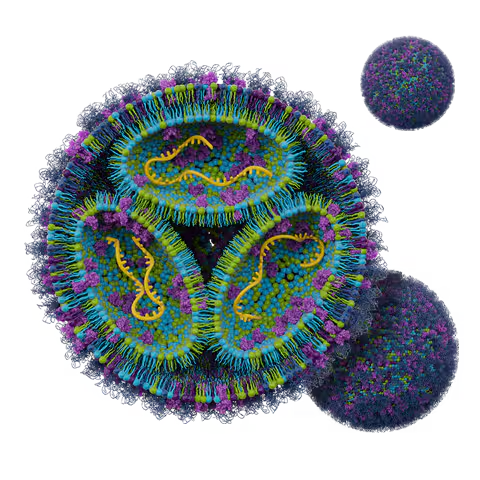I think most of us wouldn’t know that Edward Jenner introduced us to the ‘classic’ vaccine, a substance designed to trigger our immune response to protect us from infectious diseases, like viruses. However, besides being one of the greatest medical successes, the field of vaccines has now opened its way for innovative vaccine development using nano- and PLGA (poly(lactic-co-glycolic acid)) particles. These technologies, compared to traditional vaccines, show enhanced vaccine efficacy, lower toxicity and improved pharmacokinetics. A very promising innovation for treating infectious diseases. In this post, we will explore nanoparticles, PLGA particles, and the advantages they offer in vaccine development.
Part I: Nanoparticles
Nanoparticles are small particles with a size ranging from 1 to 100 nanometers – in comparison, a human hair is between 80.000 and 100.000 nanometers thick1. The interesting part is that they can cross natural barriers, like cell membranes and in some cases even the nucleus barrier, due to their size. Together with its ability to encapsulate and deliver therapeutical agents, like antigens that triggers the immune response, it already makes it more effective than traditional vaccines formulations.
There are different types of nanoparticles, like liposomes, dendrimers and polymeric nanoparticles, with each having their own unique properties. Some of them are controlled release, enhanced stability and targeted drug delivery. For example, liposomal nanoparticles protect antigens from degradation, while dendrimers have better uptake characteristics by immune cells. These properties make nanoparticles an interesting tool for next-generation vaccines with enhanced efficiency and more efficient characteristics.

Part II: PLGA particles
PLGA is a biodegradable polymer widely used in targeted drug delivery applications. It consists of two monomers, lactic acid and glycolic acid, which are linked together to form a copolymer. One of the main properties is, like the nanoparticles, the controlled release of therapeutical agents. When used as a vaccine, the sustained exposure of the antigens can lead to a higher immune response potential. Also, an important advantage in using PLGA particles in vaccines research is the ability to create a depot effect. The vaccines remain at the injection site for an extended period which reduces the need for multiple dosing. Besides that, these particles are able to presents antigens in a way that mimics natural infections, resulting in a more enhanced immune response.
Part III: Promising innovation
The integration of nanoparticles and PLGA particles into vaccines development has promising advantages. This makes them an interesting and innovative tool in treating various infectious diseases.
- Enhanced immune response: Nano- and PLGA particles improve the delivery and presentation of antigens to immune cells. This leads to a stronger immune response.
- Targeted drug delivery: Nanoparticles can be designed to target specific cells, enhancing the efficiency of the drug and minimizing the side effects.
- Potential for combination vaccines: The technology can be used to create combination vaccines, with the main purpose of increasing coverage against multiple diseases.
All in all, nanoparticles and PLGA particles represent a significant advancement in vaccine development, promising enhanced efficacy and less side effects. With further research, these innovations may lead to a new era of vaccines that effectively control infectious diseases resulting in improved public health.



Recent Comments